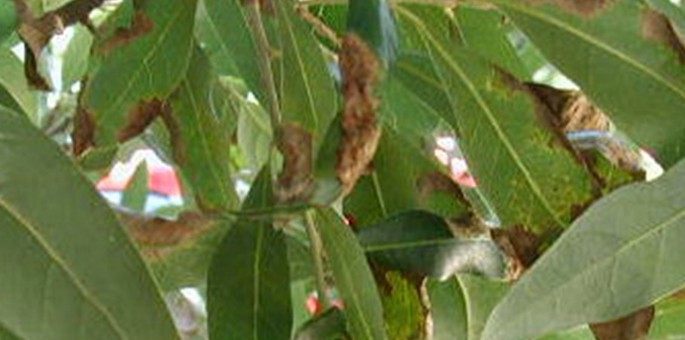Oak Anthracnose: An Introduction


Published August 12, 2010, By KEVIN BASSETT and RUSSELL PETERS
Perhaps you have noticed your Live Oaks dropping new leaves this spring. The moist conditions of the past winter and early spring, in conjunction with seasonably cool temperatures, has allowed a number of fungal diseases to develop on the leaves of many of our shade trees. One of these more prevalent this year is Oak Anthracnose. This disease infects the foliage of nearly all Oak species. It is most prevalent in our Live Oaks this year. Although it can cause problems, generally this disease is not a serious threat to the long-term health of the tree.
Oak Athracnose: Symptons, Characteristics and Effects
The spores of the fungus infect young supple leaves just emerging in the spring. After a period of rapid infection, the leaves begin to fall. Symptoms are evident on a portion of the leaf and are expressed by the margin of the new leaf turning brown or becoming necrotic. This area of browning is usually along one of the leaf margins, causing the leaf to become curled and fall to the ground. Not all infected leaves fall. In fact, many will remain on the tree throughout the season causing the overall appearance of the tree to look a bit odd. Trees in areas of little air movement and those with thick, dense foliage are most readily infected. The lower, inside canopy usually exhibits the most intense symptoms, as these leaves dry more slowly.
Temperatures consistently over 80-85 degrees Fahrenheit cause the infection cycle to cease. Fortunately, the portions of the canopy that drop leaves, will produce new leaves. Single year infections rarely cause much damage to the tree. If the disease repeats next season and infects a larger portion of the tree, preventative fungicide applications may be needed. Foliar sprays, which reduce the incidence of the disease, should begin when the new leaves appear in March. It usually requires two to three applications at 21 to 30 day intervals to adequately manage this disease. If evidence of the disease is observed in late spring or early summer, foliar sprays are normally not recommended. Your consulting arborist may however, recommend deep root fertilization in order to encourage the production of new leaves and improve the overall health and vigor of the tree.
If you have any further questions regarding Oak Anthracnose, Live Oaks, or trees in general, we are here for you.

